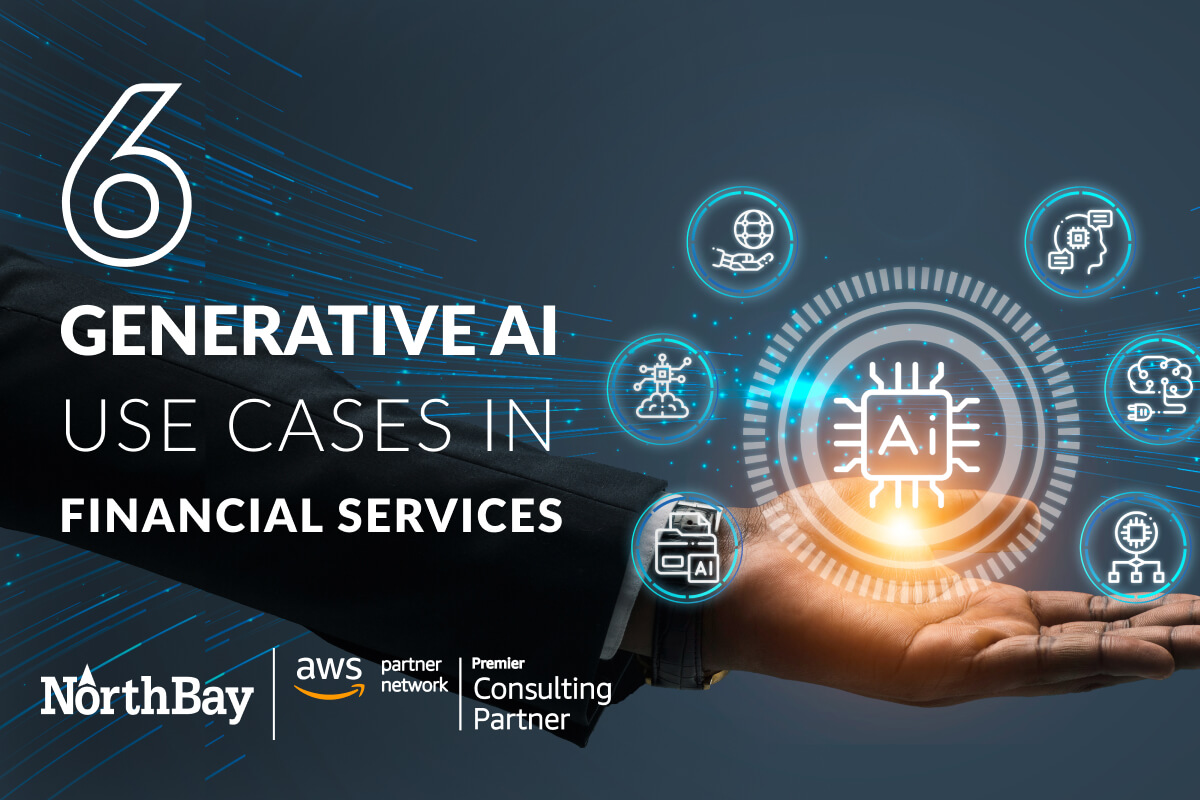
Artificial intelligence (AI) in financial services is nothing new. Banks and mortgage companies, for example, have for years leveraged AI apps to find qualified prospects, expand customer relationships, deliver personalized products and experiences, fight fraud, manage credit risk…the list of proven use cases goes on and on.
If the ability of AI to help the financial sector "do more with less" is well-known, and the adoption rate is high, then what's all the buzz about generative AI? Isn't it just another form of AI that's been used for years? The answer is yes – and no.
As with all types of AI, generative AI is powered by machine learning models, and in this case, extensive models (known as Large Language Models or LLMs) that are pre-trained on vast amounts of data. However, as explained in Forbes, "Traditional AI systems are primarily used to analyze data and make predictions, while generative AI goes a step further by creating new data similar to its training data. In other words, traditional AI excels at pattern recognition, while generative AI excels at pattern creation. Traditional AI can analyze data and tell you what it sees, but generative AI can use that same data to create something entirely new."
Following are six ways financial services firms are seeing success using generative AI.
Six Generative AI Use Cases in Financial Services
- Assessing Creditworthiness:
Generative AI can give financial institutions a more robust, holistic view of consumer behavior and credit history. As a result, they can make more informed decisions regarding risk. Generative AI models augment existing data by creating statistically similar synthetic data and then using it to train more robust models for credit scoring. Generative AI also helps identify non-traditional variables or patterns to assess a borrower's creditworthiness more accurately. This allows companies to make more informed lending decisions for folks with minimal credit history.
- Detecting and Preventing Fraud:
Financial services institutions face constant threats from fraudsters. Generative AI can analyze transaction data and generate risk profiles for customers, flagging unusual patterns or anomalies that may indicate fraudulent activity. It can also help in predicting credit default risks by analyzing historical payment behavior, thus enabling proactive risk management. One of the significant advantages of these systems is their ability to learn and adapt continually. As new fraudulent activities emerge, AI models can adjust and refine their detection methods without requiring manual intervention.
- Customizing Financial Services Products:
With the power to analyze vast datasets and decipher intricate market trends, Generative AI-based solutions can tailor financial products to individual customers like never before. By understanding each customer's unique financial profile, risk tolerance, and long-term goals, these AI-driven solutions can craft personalized investment strategies, insurance plans, or lending products that optimize returns while minimizing risk.
- Simulating Real-world Scenarios:
Generative AI can construct intricate models that simulate real-world scenarios, considering many variables and factors. By running numerous scenarios, generative AI helps organizations anticipate potential outcomes, test the robustness of their strategies, and make better data-driven decisions. In essence, generative AI's role in scenario simulations empowers decision-makers with the foresight and knowledge needed to thrive in an increasingly unpredictable environment.
- Personalizing Customer Interactions:
Natural language processing (NPL) NLP interacts with data through Generative AI to build Q&A systems. These systems process questions and search for relevant information in large knowledge bases to provide accurate answers. The models are trained on annotated data where questions and corresponding answers are provided. As a result, chatbots, used only to answer a fixed set of questions, can now leverage NLP models to extract relevant information from user inputs, such as intent classification, entity recognition, and sentiment analysis. This enables the chatbot to understand user requests and provide appropriate responses accurately. What's more, firms can automatically translate complex questions from customers into their semantic meaning, analyze them for context, and then generate highly accurate and conversational responses. They can even change their tone to match that of the customer.
- Optimizing Trading Strategies:
Firms leverage traditional AI to mine news and social media for known signals, sentiments, and behaviors that can enhance the efficiency and effectiveness of trade decision-making. With Generative AI-powered solutions, however, firms can correlate data from multiple sources and process them in real-time in order to identify previously unconsidered sentiments that can impact trades. In other words, while traditional AI looks for what you tell it to, generative AI can tell you what to look for
Generative AI Solutions that Generate Meaningful Results with NorthBay
At NorthBay, we're laser-focused on helping organizations leverage AWS AI services – including generative AI for maximum value. To learn more about offerings and successful financial services customer engagements.




